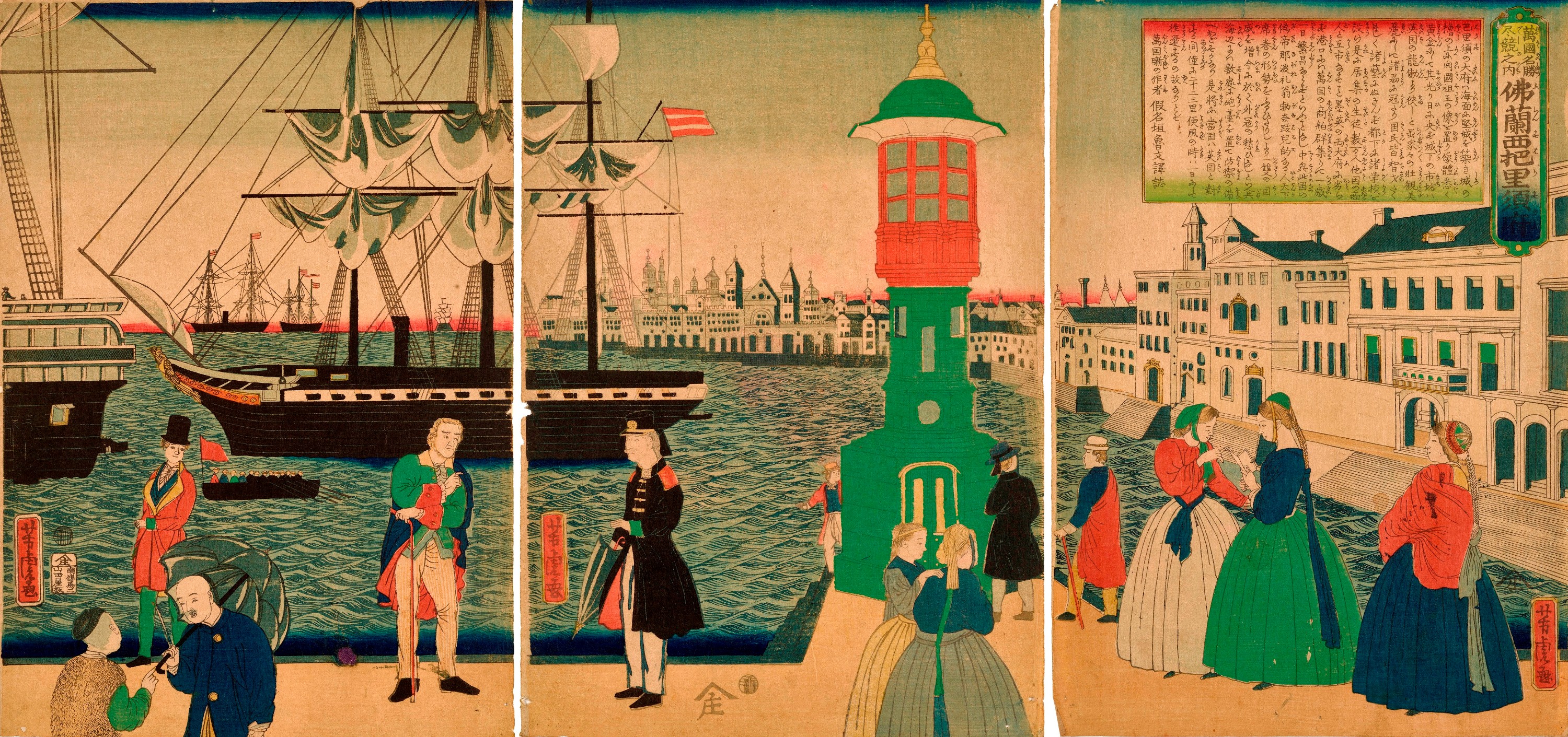Baur
Japanese Prints 1860-1890
25 5月 2022 - 24 7月 2022
-
All these works date to between 1860 and 1890, three decades corresponding to the last years of the Edo period 江戸 (1603-1868) and the beginning of the Meiji era 明治 (1868-1912); this was a crucial time in the history of modern Japan, marked by profound political and social changes brought about, among other things, by the opening of the country to ideas and technology from the West. In the first part of the exhibition, the “Pictures of Yokohama” (Yokohama-e 横浜絵) illustrate the early phase of this encounter, with an emphasis on the Westerner. In the second part, the hashika-e 麻疹絵 (“images of measles”) reflect the hopes and fears of the population faced with a deadly epidemic of that disease in 1862. The exhibition ends with a presentation of the great print designer Tsukioka Yoshitoshi 月岡芳年 (1839-1892), whose career spanned the years between 1863 and 1892: deeply attached to the history and values of his country, he was also a hugely innovative and creative artist.
The artists in this exhibition all belong to the prestigious Utagawa 歌川 school and represent the generation of the students of Hiroshige 広重 (1797-1858), Kunisada 國貞 (1786-1865), and Kuniyoshi 國芳 (1798-1861). Through their apprenticeship in their workshops, they were trained in a very wide range of subjects, from portraits of actors and women, to landscapes, warrior subjects, and humorous pictures. The same artists’ signatures appear on both the Yokohama-e and the hashika-e, all of them fellow students of Yoshitoshi who also contributed several compositions in these same categories.These prints, which come from donations, have for the most part never been shown before at the Baur Foundation.
